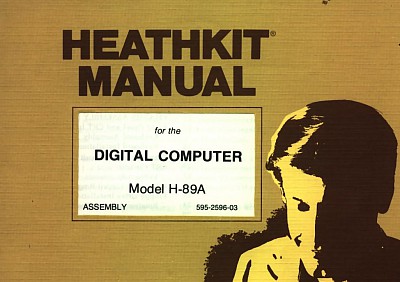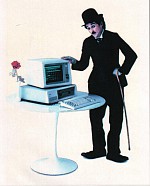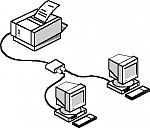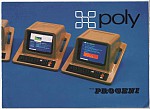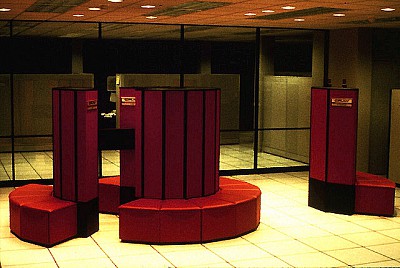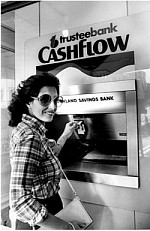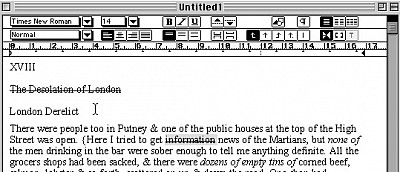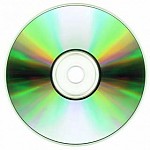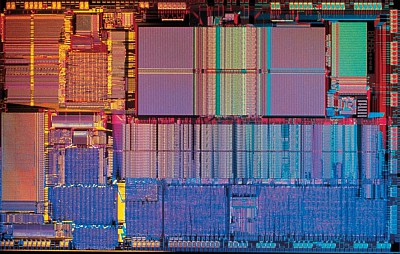Computer Science
Computing History Displays: Computer History Time Line - PCs and networks
Commercial applications are still dominated by large, centralised computers, but smaller, cheaper computers are catching up fast. Although many networks are developed and the Internet is under way, the worlds of the mainframe and PC remain quite separate.
Before 1980, computing and programming have been taught in other departments under the guidance of a governing committee. In 1981 the department is equipped with Zenith Z89 PCs, some of which are built by staff from Heathkits. Computing is also developed as a specialty in the Management Science and Information Systems department in the Faculty of Commerce. Further Images.
When the world's largest computer company begins manufacturing personal computers, the machines at last stop being seen as toys for geeks. The IBM PC, which arrives in 1981, is the smallest IBM computer ever. The successors of the IBM PC are now the most common computers sold, although they are manufactured by many suppliers, such as COMPAQ/HP and Dell. IBM also maufactured and sold PCs but eventually sold their business to the Chinese company Lenovo.
4.4.4 Local area networks (LANs)
In 1981, this department implements its own LAN to connect Z89s with printers. LANs have been growing in popularity with proprietary systems. An important step is the development of Ethernet in 1973 by Xerox's Palo Alto Research Centre (PARC). Later, LANs are provided to connect together small computers - for example Appletalk from Apple Computer.
4.4.5 Exporting knowhow
Progeni, founded in 1968 by Perce Harpham as Systems and Programs, is the first NZ company to export software. It sells systems to Dulux in Australia and a school timetabling program to the UK. In association with Wellington Polytechnic the company develops the Poly computer, a hardware and software package targeted at education. In 1983, it secures its first sales of the Poly in China. More information on computers "Made in New Zealand" is available here. Further Images.
In 1984 Apple Macintosh introduces the Graphic User Interface (GUI). Modern, user-friendly computing arrives. The Apple Macintosh is particularly targeted as a "transportable" computer for students. Auckland University joins the Apple Macintosh Consortium. The Macintosh approach, dubbed WIMPS (for Windows, Icons, Menus, Pointers), makes the Mac the first widely available PC to use the modern interface. The WIMPS approach will later be adopted by Microsoft with their "Windows" software.
4.4.13 Electronic mail
Email is universally adopted throughout our Computer Science department in 1986. It is initially used for document and message interchange within the department . It also provides access to international mail via the Internet, which is quite unreliable at first. The Internet protocols were developed in 1977, building on the Arpanet that was first operational in 1969.
4.4.15 The plague
The first bad computer virus, the Robert Morris worm, is identified in 1988. It is named after Robert Morris, Jr., a graduate student at Cornell who writes an experimental, self-replicating, self-propagating program called a worm and injects it into the Internet. But the program replicates and reinfects machines at a much faster rate than he has anticipated. Machines crash at many locations, including universities, military sites, and medical research facilities. Morris is convicted of violating the Computer Fraud and Abuse Act.
There are many small software companies founded in the Auckland area which enjoy success. Among them is Peace Software, founded in 1988. It became a leading provider of deregulated utility customer service software and an important local IT employer, particularly of university graduates. There are other companies that are successful in niche medical markets. Many of these companies are eventually sold to larger overseas companies.
Top

